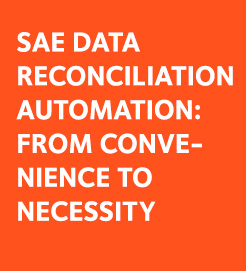During the conduct of a clinical trial there may be several cases where data are captured in more than one place and need to be reconciled before the study is closed. The most frequent case, and the most critical for the quality of the study and for patient safety, is SAE related data captured in the clinical and the safety database. Among companies that are not using an integrated platform for data capture and pharmacovigilance, many declare using Excel with manual checks. Is yours one of them?
Serious Adverse Events (SAE) reconciliation is a crucial step in the pharmacovigilance process not only because it improves the study data integrity and quality, but also because it is a requirement for ensuring patient safety. This is an important aspect that health authorities have in mind during inspections and the main reason why auditors look closely at how the reconciliation has been performed and tracked. Among companies that are not using an integrated platform for data capture and pharmacovigilance, many seem to resolve to manual processes, sometimes only performed close to the clinical database lock, for reconciling the critical SAE information. If a tool like Excel appears to be very powerful, it nevertheless requires a lot of manual work and is prone to errors and involuntary changes that may go unnoticed until it is too late.
The tool for performing a seamless, accurate and simple data reconciliation exists: it is called eReconciliation® and here are five good reasons why every company should use it:
Reason 1:
Safety data are an integral part of the marketing authorization and must be crystal clear. eReconciliation® ensures that all discrepancies have been addressed and provides archivable results for future use.
Reason 2:
Not all data can be exactly matched: sometimes there are acceptable ranges of value deviation or other acceptable discrepancies. These must be clearly documented. eReconciliation® allows capturing these tolerance exceptions and documenting them for future use.
Reason 3:
All decisions must be documented: regular meetings between all involved parties allow to decide on the best way to resolve each discrepancy (correct errors in data, query the sites, accept the differences etc.). All these decisions must be documented and presented in case of audit to justify the retained values.
Reason 4:
Data change continuously during the study: this may create new cases where there were none before and eReconciliation® automatically tracks changes and re-submits cases for reconciliation as needed. If the data has changed in the meantime, eReconciliation® will only present the latest data for review. Monitoring these changes with a static tool like Excel is not possible. Therefore, a considerable manual effort is needed in order to continuously adjust all along the study conduct, unless reconciliation is only performed at the end, however...
Reason 5:
In most cases reconciliation at the end of the study is not a good option. As the clinical database lock approaches, data operations tend to accelerate. Queries must be resolved; data must be cleaned...This is a very bad time for adding more complexity with the safety data reconciliation. eReconciliation® allows a seamless review during the study with the assurance that any interim data changes will be detected automatically and presented for review.
There are probably many more good reasons for walking away from Excel and manual processes for safety data reconciliation but the most relevant is this: there is an excellent alternative. eReconciliation® will allow your organization to perform safety data reconciliation all along the study conduct with confidence, will help you document tolerance levels and decisions taken by the study team and will prepare archivable material for audit purposes.
DOWNLOAD NOW THE FREE SAE RECONCILIATION HANDBOOK
The Manual / Reference Book with all the topics related to the Safety Data Reconciliation Management.







